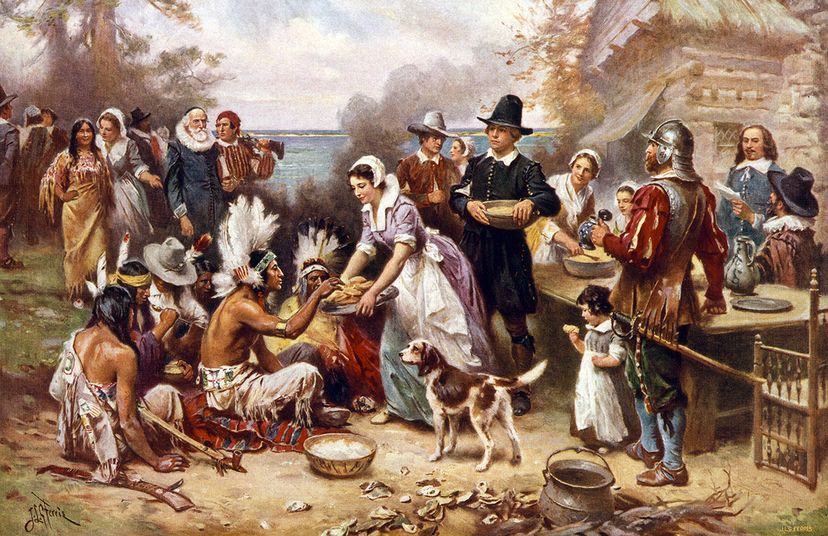
About This Quiz
A table full of turkey, corn, stuffing and cranberries can only mean one thing: Thanksgiving! Aside from the tasty morsels, Thanksgiving is also a yearly celebration of gratitude that originated with the Pilgrims and Native Americans.President Abraham Lincoln proclaimed that Thanksgiving would be the last day in November. Lincoln was mainly out to boost the Union army's morale during the Civil War.
In order to appease businesses that wanted a longer Christmas shopping season, President Roosevelt moved Thanksgiving up a week. He later compromised by making it the fourth Thursday in November.
Venison and fish, instead of turkey, were probably the main sources of protein at that first communal gathering.
Advertisement
Many Native Americans began a Day of Mourning to remember the violence and discrimination suffered by their ancestors.
In 1817, New York officially adopted a yearly Thanksgiving day and other states followed suit.
According to Greek mythology, the prominent Thanksgiving symbol of a cornucopia is an enchanted severed goat's horn that will produce a never-ending supply of whatever its owner desires.
Advertisement
Every autumn, the ancient Greeks held a festival honoring Demeter, the goddess of corn and grains.
Turkey is such an integral part of Thanksgiving that more than 90 percent of Americans have it on their table.
On Thanksgiving day, thousands of people watch floats parade down the street in the Macy's Thanksgiving Day Parade.
Advertisement
According to the U.S. Census Bureau, the typical American consumed 13.4 pounds (6.1 kilograms) of turkey in 2004. In that same year, the typical American ate 4.7 pounds (2.1 kilograms) of sweet potatoes.